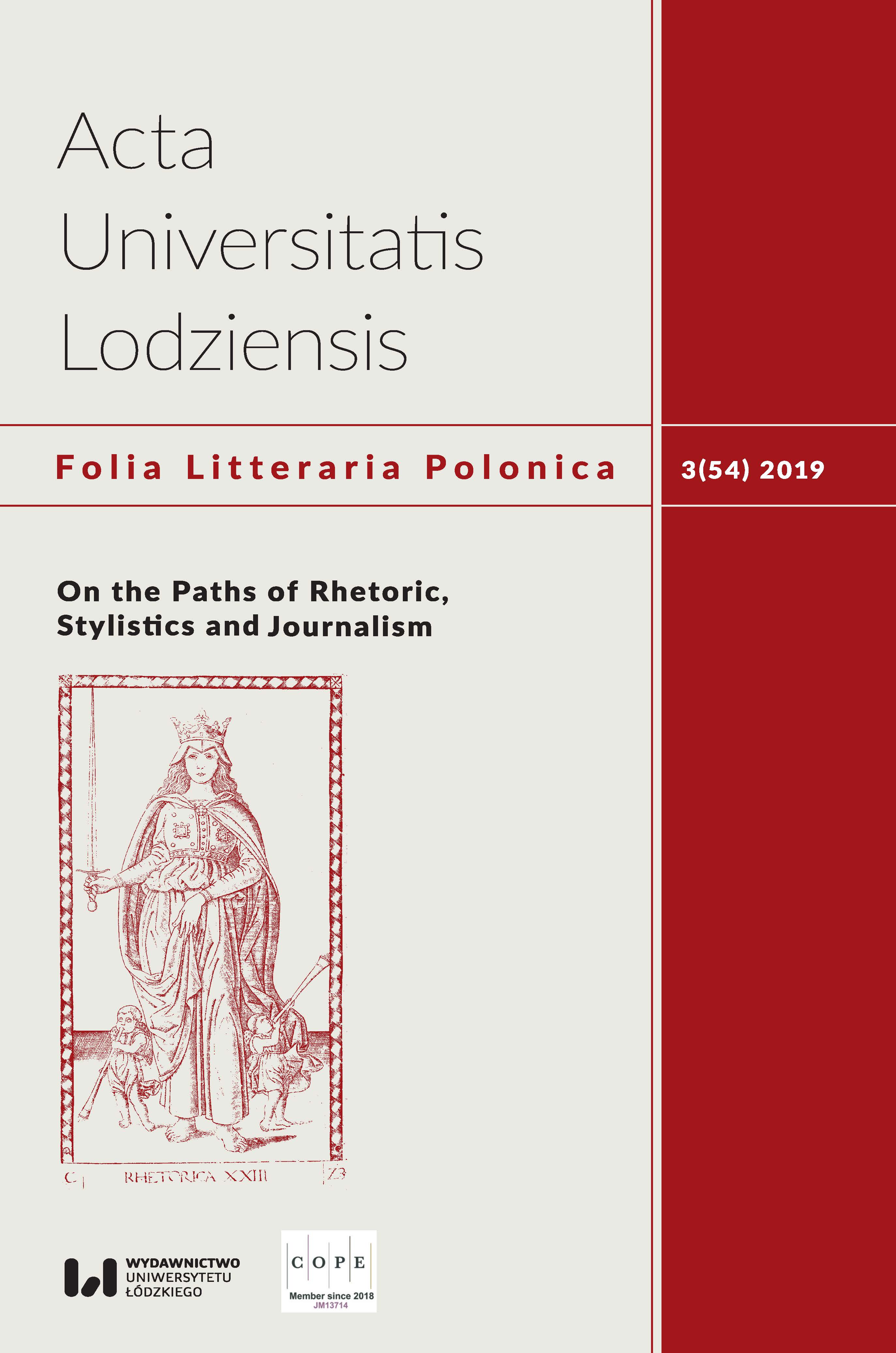Artistic Inspiration: Initiation of an Artistic Communication
DOI:
https://doi.org/10.18778/1505-9057.54.13Keywords:
output, visual communication, composition, painting’s formal structure, formal narration, theory of vision, verbal communication, visual messageAbstract
The article is an attempt to answer the question: When and why is artistic communication initiated?
The analysis which leads to the final conclusion was conducted on the basis of an autoethnographic analysis of the process of creating Pomnik Początków Miasta Łodzi (Monument to the Beginnings of Łódź). Its main element was the search for the border between the pre-creative and the creative states during an artist’s work. The analysis indicated that: “Regardless of whether I am working on a sculpture which was commissioned or a sculpture for myself, the processes of triggering precreative and creative states are similar. I always begin work by collecting the material. I work as constructivists would like me to: I study the elements which refer to various differentiation systems. [...] I am aware of the fact that the expected transition from the pre-creative to the creative state can happen at any moment. Today, after many years, I already know that it is not worth evaluating the gathered material – the triggering of the creative state is going to happen either way.” The core of triggering the creative attitude is the development of the skills for observing the reality which surrounds an artist, and even more importantly: the development of the skills of extracting from it that which we are used to calling inspiration in the whole complex process. The line between the pre-creative and creative states emerges in the moment when an artist decides to transfer a fragment of the reality they noticed to the work of art they are creating. The evaluation of a work of art is a completely different issue, which was omitted in this article.
Downloads
References
Fleischer M., “Dwa rodzaje reprodukcji systemów – dywersyfikacja i dyferencjacja”, [in:] Komunikatywizm w Polsce. Wybrane zagadnienia z teorii i praktyki, Habrajska G. (ed.), Primum Verbum, Łódź 2011.
Google Scholar
Fleischer M., Kapitał niestety nie( )ludzki, Libron – Filip Lohner, Kraków 2014.
Google Scholar
“Geopoetyka materii rzeźbiarskiej”, [in:] Strategie twórcze w działaniu, G. Habrajska, J. Ślósarska (eds.), Wydawnictwo Primum Verbum, Łódź 2016.
Google Scholar
Głowacki J., “Przekroczyć próg”, [in:], Przekroczyć próg, BILBO Graficzne Studio Komputerowe, Łódź 2001, p. 7.
Google Scholar
Luhmann N., Pisma o sztuce i literaturze, Wydawnictwo Naukowe Scholar, Warszawa 2016.
Google Scholar
Statement of Komitet Obrony Demokracji, 3 Aug 2018, https://www.ruchkod.pl/oswiadczenie-komitetu-obrony-demokracji/ [accessed on: 20.08.2018].
Google Scholar
Strzemiński W., “Bilans modernizmu, ‘Europa’”, [in:] Powidoki życia. Władysław Strzemiński i prawa dla sztuki = Afterimages of life: Władysław Strzemiński and rights for art, J. Lubiak (ed.), Muzeum Sztuki w Łodzi, Łódź 2012, pp. 115–116.
Google Scholar
Strzemiński W., Teoria widzenia, Muzeum Sztuki w Łodzi, Łódź 2016.
Google Scholar
Wallis M., Przeżycie i wartość. Pisma z estetyki i nauki o sztuce 1931–1949, Wydawnictwo Literackie, Kraków 1968.
Google Scholar
Władyka-Łuczak Z. [publication in progress].
Google Scholar
Downloads
Published
How to Cite
Issue
Section
License

This work is licensed under a Creative Commons Attribution-NonCommercial-NoDerivatives 4.0 International License.











